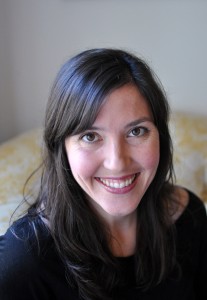Five Questions with Kate Bolton Bonnici
Will McCarry: We published two pieces from you in the most recent issue of NANO, 7.1: “The Dove” and “Moonshine.” Both pieces deal with children experiencing the suffering and the ultimate death of an animal. How is this experience potentially important in the development of children?
Kate Bonnici: I grew up out in the country in Alabama, and it seemed animals were always dying—cats, dogs, horses, cows, birds, fish, worms. We had a significant pet cemetery. The funeral of one car-struck cat was even presided over by an Episcopal priest, a kindness for which I am grateful. An early art project I remember—decorating a wooden tombstone for our dog. Birth and death were woven into the fabric of our experience, painful givens. Now, at least for the next few years, I am raising my young children in Los Angeles, a vibrant, complicated urban environment. Their playground is AstroTurf. My older daughter says things like, “one day when we have real grass…” This morning, my younger child asked me to draw a horse—and then to draw the horse an outfit. I do worry about their disconnect from the natural, organically cyclical world (where my writing and my sense of self are strongly settled), even as I value their immersion in the peopled one.
WM: In “The Dove” there doesn’t seem to be much resistance from the character’s father to her having the bird in the first place, and in “Moonshine” the kids go out in the field and play with the baby calf of their own accord. This struck me because on the farm I grew up on, if I’d gone out into the field alone I would have been in serious trouble. Children seem to have a lot of control and input in both stories. What prompted this choice to have the adults be somewhat absent?

KB: Memory through a child’s perspective of adults as shadowy background figures? Actually, my memory of childhood involves a lot of autonomy, time alone in the outdoors. I also think that in the stories of childhood I’m trying to understand (either through nonfiction or fiction), I’m usually trying to determine the narrator’s place. She’s struggling to navigate the complexities of a child’s experience, and adults cannot always help.
Moonshine and the other rescued calves (we usually had one) were kept in their own little paddocks, apart from the big cows (and bull!). My brothers and I were responsible for their care and upkeep, and we treated them more like dogs or other pets than the more off-limits big-pen cows.
WM: You display substantial knowledge of cattle farming in your piece “Moonshine.” Did this come from personal experience, or was it mostly gained through research?
KB: Personal experience. I grew up on a farm with cows, horses, chickens, dogs, and an endless line of stray cats. (Research involved asking my farmer-father to confirm details.)
WM: Who are the writers (flash fiction or otherwise) that you most admire, and what qualities drew you to their work?
KB: The answer to this question constantly shifts. Angela Carter, A.S. Byatt, Kathryn Davis, Kate Bernheimer—for their wise re-telling and re-imagining of folklore and fairy tales. Laura Kasischke—for her ecstatic metaphors. Mary Oliver, Tracy K. Smith, James Galvin, Maureen McLane, Kimiko Hahn, Sawako Nakayasu, Christian Bök—for shaping and then changing my understanding of poetry. Carson McCullers, Eudora Welty, Flannery O’Connor—for introducing me to stories.
WM: What else can we look forward to from you in the future?
KB: I’m finishing a poetry manuscript that concentrates on place and nature and the conjunction of rural and urban environments, the layers of congestion in my current experience. I’m beginning a poetry-prose hybrid that explores myth, folklore, and fairy tales—the logical next step in my processing of suffering and death in children’s development?
Listen to Kate’s story from NANO Fiction 7.1 below. Purchase a copy here.
